Abstract:
This case report delves into an uncommon complication during the fixation of an epidural catheter in a 27-year-old female patient undergoing right knee arthrolysis. Despite the unexpected peeling of the outer sheath, the drug-delivering segment remained functional, ensuring continuous pain relief during three days of postoperative epidural infusion for physiotherapy. We correlate this case with the comprehensive historical evolution and material advancements in epidural catheters, offering insights into their design, materials, and construction.
Introduction:
The evolution of epidural catheters over the years has witnessed significant advancements in design, materials, and construction. These innovations aim to enhance the safety, efficacy, and overall performance of epidural anesthesia and pain management. This context provides a backdrop to our case, underlining the significance of material choices and design innovations in epidural catheter evolution.
Case Presentation:
In the context of a 27-year-old female undergoing right knee arthrolysis, fixation of the epidural catheter led to the unexpected peeling of the outer sheath. Despite this, the drug-delivering portion remained intact, ensuring continuous pain relief during three days of postoperative epidural infusion for physiotherapy.

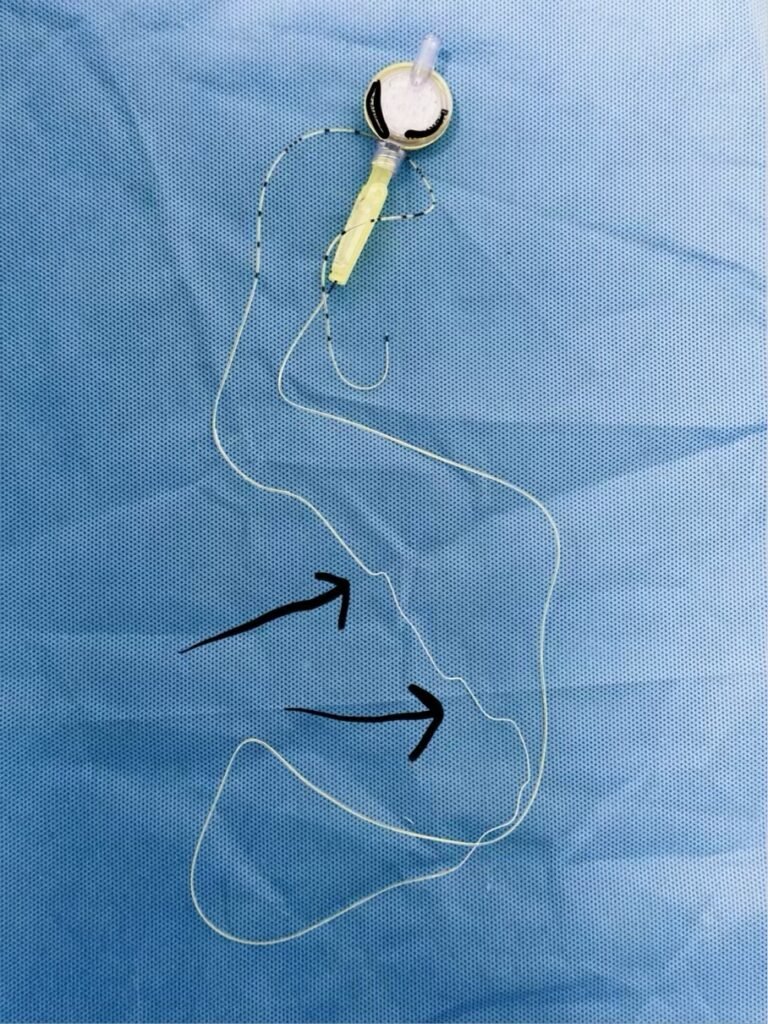
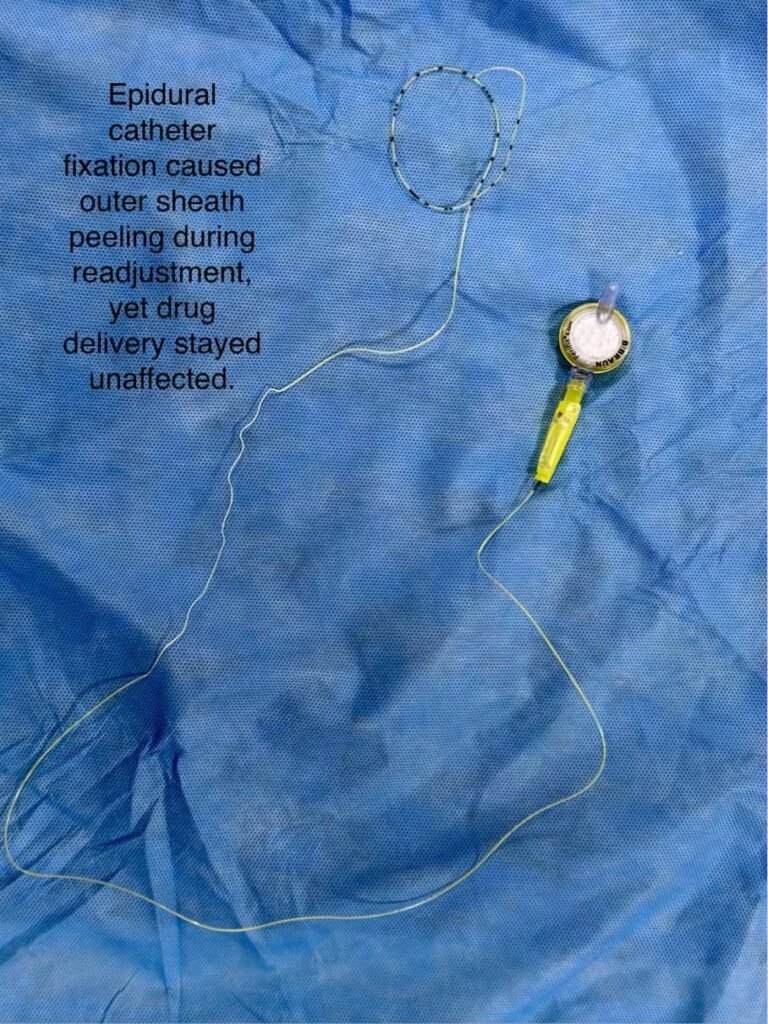
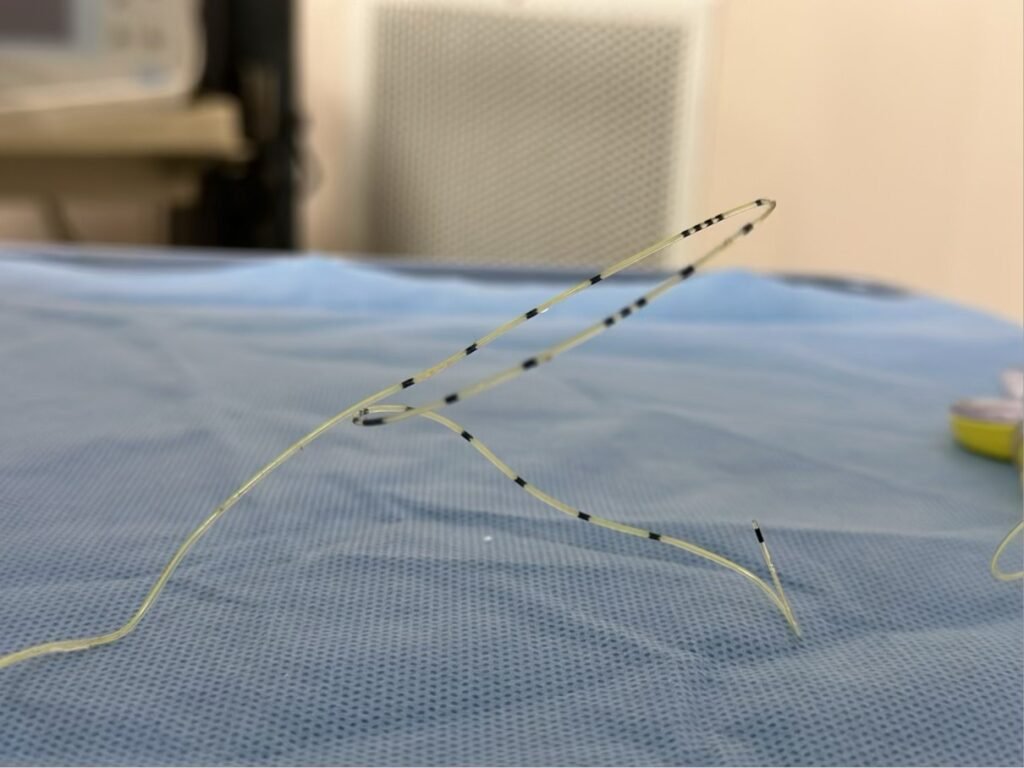
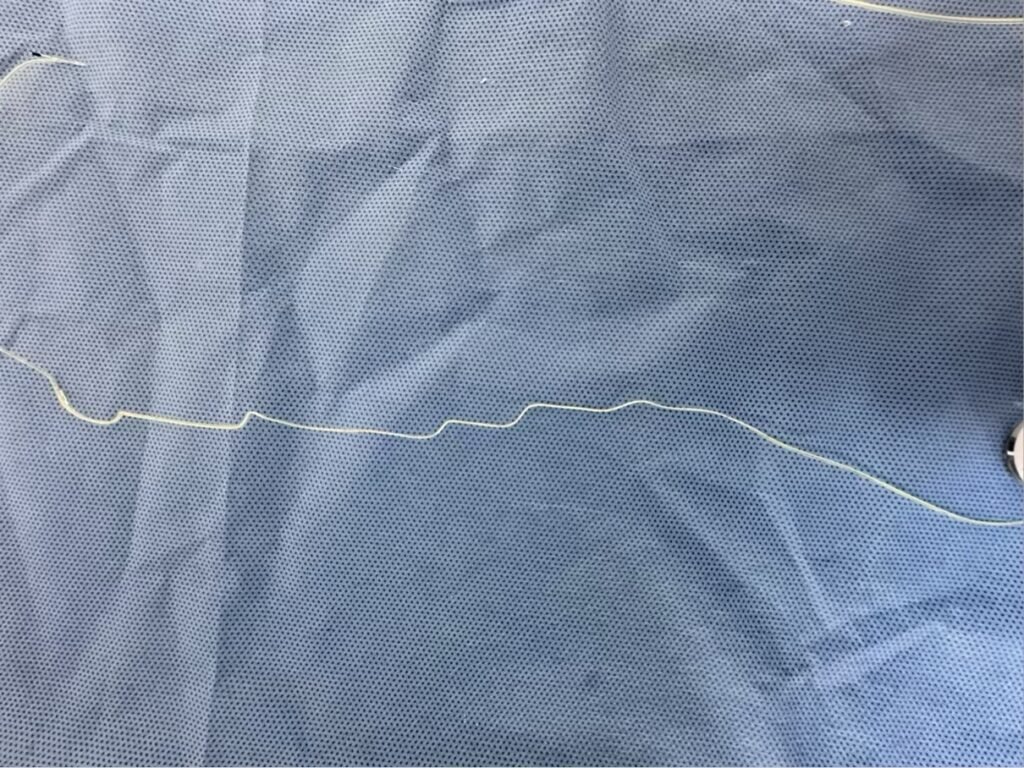
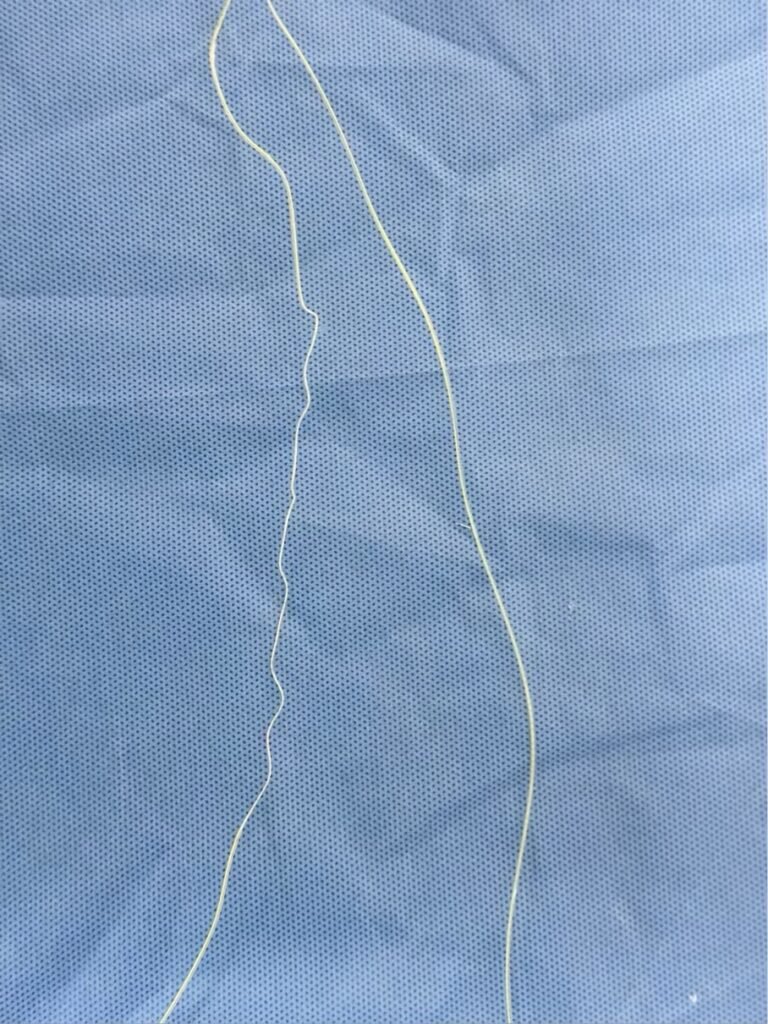
Discussion:
- Historical Context:
- The journey from early single-layer catheters constructed with materials like silk and rubber to the introduction of multilayer designs is explored.
- Key milestones, such as the transition to plastics and the emergence of wire-reinforced catheters, set the stage for understanding the complexities of modern epidural catheter design.
- Material Evolution:
- The historical context of epidural catheter materials, from the adaptation of ureteral catheters to the introduction of synthetic polymers like nylon, polyethylene, and polyvinylchloride, is detailed.
- The latest technological leap with wire-reinforced catheters is discussed, emphasizing their features, benefits, and variations.
- Clinical Implications:
- The clinical implications of material choices, from early silk and nylon catheters to the latest wire-reinforced versions, are highlighted.
- Considerations for healthcare professionals in selecting catheters based on flexibility, stiffness, and radiopacity are discussed.
Immediate Action Taken:
- The unexpected peeling of the outer sheath during fixation prompted immediate action, including a bolus of 3ml local anesthetic injection via the epidural catheter. No leakage or resistance was observed.
- Continuous epidural infusion proceeded during the procedure, with no stress responses noted.
- Post-procedure, the patient was repositioned to ensure no leakage, and she remained pain-free.
Conclusion:
This case, set against the backdrop of epidural catheter history and material innovations, reflects the resilience and adaptability of these medical tools. The unexpected complication during fixation underscores the importance of ongoing research and innovation in the field. The journey from early designs to wire-reinforced catheters exemplifies the commitment to improving patient safety and comfort in epidural anesthesia and pain management.
Note: Historical information is provided for contextual understanding and may not capture the latest advancements in epidural catheter technology.


